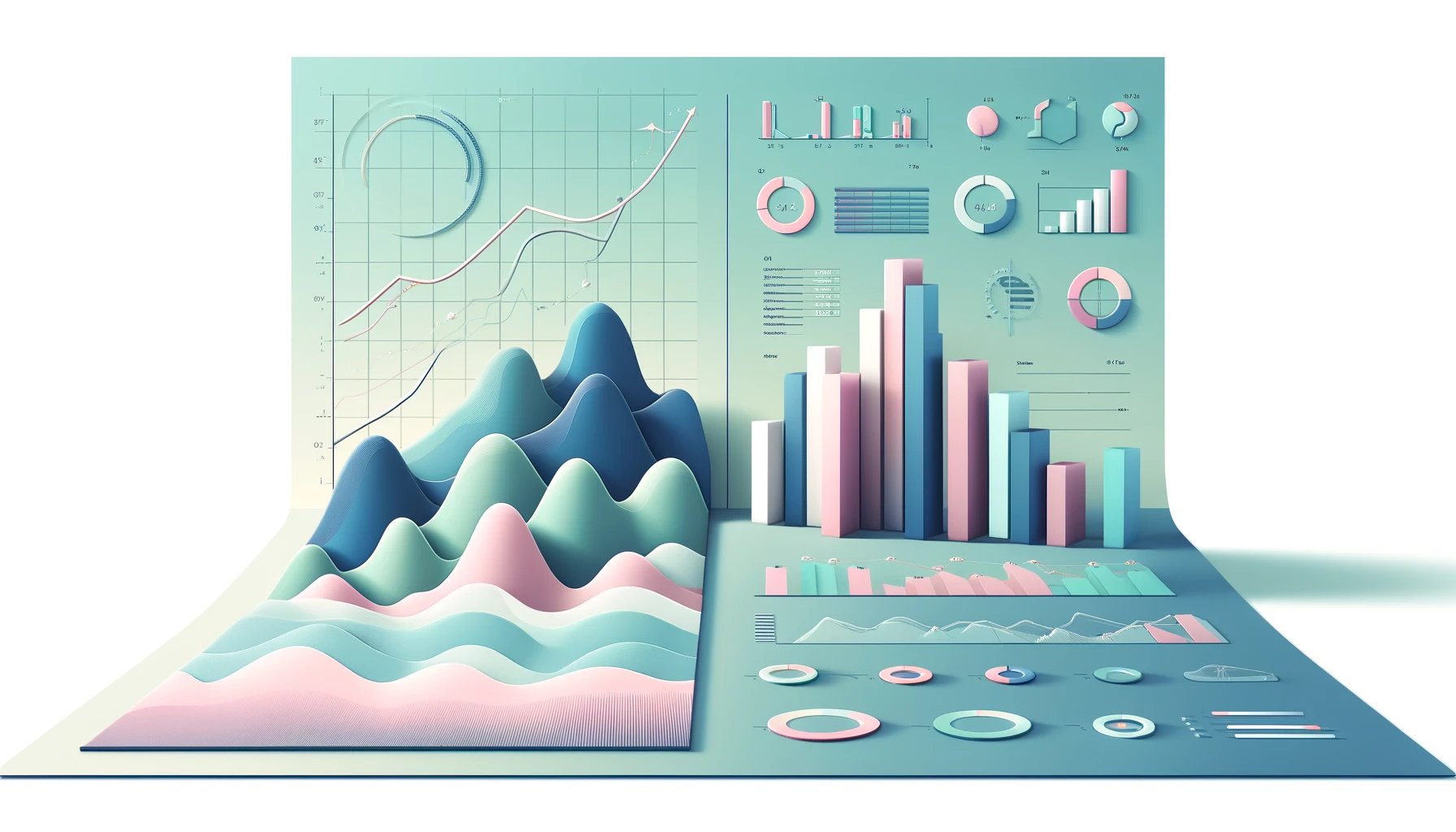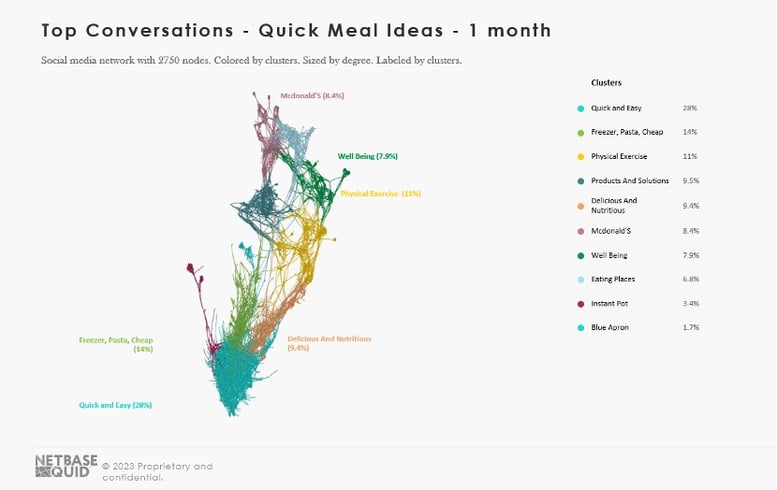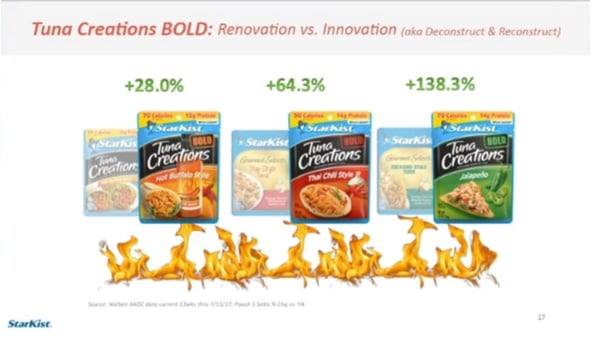Brooklyn Rosenhan

Blog Summary
This blog explores the significance of trend analysis in marketing, detailing how it can strategically position brands to align with consumer needs and market shifts for optimal outcomes.
Key Points Overview
Top Takeaways
Conclusion
Employing trend analysis in marketing is not just beneficial but essential for brands aiming to stay competitive and responsive in rapidly changing markets. It empowers brands to foresee and adapt to trends, thus maximizing their strategic impact and consumer relevance.
Trends come and go, and marketers need to keep tabs on the lifecycle of each with proper trend analysis. A trend analysis is the method used to track shifts in trends for an ongoing understanding of global and niche narratives. From a marketing perspective, a trend analysis is all about positioning your brand for the best outcome for your brand objectives. We’ll discuss the advantages in more detail here, and also how trend analysis works in marketing.
Specifically, we’ll cover the following themes:
First, here are a few stats to keep in mind for your next trend analysis:
With that, let’s see how a trend analysis can give you a leg up on your marketing endeavors.
If your market research is a portrait, a trend analysis is the backdrop. An understanding of trend movement is akin to capturing subtilities and context that complete the picture. And this includes framing out your marketing strategies. Positioning your brand marketing with current and emerging trends ensures that your content contains these nuances that will attract your target audience.
Without an understanding of how emerging trends ebb and flow, you are simply acting on what’s popular now. That may work for a time, but consumer attitudes and perceptions of value change. New trends don’t usually appear overnight, so monitoring them for incremental growth allows you to adapt with the times. Those that do not, struggle to catch up or don’t make it at all. Just ask Blockbuster.
A trend analysis reveals which trends are losing steam, branching off, or emerging so you can position your brand to best align with the changing tides of commerce. Keeping tabs of both traditional media and social ensures you have the complete picture of trend movement. For example, to put an even finer point on it, you’ll want to see what conversations are trending with top- and mid-tier sources to determine actual and potential coverage volume in niche areas and who/what is capturing conversation globally – or however you define it.

Understanding the nature of global and niche trends is a tremendous help in focusing your content marketing strategy. A trend analysis reveals changes in consumer needs and behaviors in addition to who’s saying what and where. Tracking these conversations over time lets you know if niche trends are just passing fads or if they’re catching mainstream traction.
As consumer behavior shifts and pushes new trends, a firm handle on the conversation’s movement allows you to adjust your influencer marketing strategy. Additionally, it gives you the ability to rethink your CPG packaging to reflect new attitudes towards products, sourcing, ingredients or functionality.
Furthermore, trends running behind social issues can tell you when it’s time to reassess your branding in a nod to changing times. For marketers, trend analysis plays a key role in keeping your brand and its messaging fresh to meet consumers’ wants and needs.
There’s a lot of nuance informing the art of trend analysis – and its use cases for brand marketing are myriad. Let’s look at a few in further detail.
The digital era has ushered in a tsunami of big data. To make heads or tails of it, data analytic tools built on artificial intelligence make all the difference in getting intel fast. Brands are focused on agility and speed to insight to stay in tune with the voice of the customer (VoC) and stay a step ahead of the competition.
To that end, top brands rely on the intel that trend analysis provides to identify critical items that can influence decision-making. Knowing the broad global conversations, and the ones bubbling below the surface, helps brands stay relevant, avoid missteps and keep their marketing message on point. Let’s dive into a few examples.
When it’s time to strategize for your next marketing campaign aligning with current trends will give you the highest probability of success. That’s because you can use that intel to know which conversations are gaining steam and gear your campaign in that direction. Conversely, if you’re shooting blind regarding trends, you run the risk of irrelevancy or accidental tone-deafness.
You’re going to spend a lot of time and energy developing your campaign, so make sure it pops with your audience. A trend analysis confirms where they’re talking and what’s pressing. Lean into it, and you’ll create a winner for your brand and your clientele.
Likewise, with the energy put into a new product or service, you need it to be well received. A trend analysis will highlight the dos and don’ts to build out your next offering with precision. For example, with CPGs in the food industry, customers’ preferences change over time due to new diets, ingredient information and flavor profiles. Knowing exactly where these trends are heading puts you ahead of the curve. And we’re talking real money here. Don’t throw out a dud when trend monitoring will help you aim your product where it will resonate the most.
This is precisely what StarKist did. Not only did they learn what new flavor profiles were exciting consumers, but they also revamped their packaging to include the word bold and saw a substantial increase in sales.

Understanding global and niche trends is the first step of staying in tune with your target audience. Drilling down into the demographic data and psychographic layers, such as interests, will help you develop a well-rounded understanding of who your customer is. Not only that, you’ll know what they like, their emotions, occupations and where their hang-ups are within your category. This is key for pinpointing pain points. For example, suppose you want to make a splash with consumers involved with ethical fashion. In that case, it helps to know what interests motivate consumers talking about ethical fashion.
.png?width=966&height=420&name=Untitled%20design%20(1).png)
When you develop a rich understanding of who your customer is against the backdrop of emerging trends, you’re on to a winning formula for success. This kind of consumer intelligence allows you to craft brand messaging and product placement concepts with surgical precision. And it enhances customer experience (CX) all around. More on that below.
Once you have laser-specific insight into the VoC, you can approach every aspect of the customer journey with fresh eyes. It’s the next best thing to walking a mile in their shoes as they approach your brand. Seeing their wants, needs, loves, dislikes and motives allows you to tailor your CX strategy for a custom fit.
And consistent monitoring of your trend analysis allows you to adjust as temperaments, attitudes and social stimuli change over time. Your consumers will notice that you have your finger to the pulse of society, and that goes a long way with maintaining consumer trust. Trend analysis in tandem with your VoC intel allows you to beef up your customer retention. And that’s huge since it costs way more to win new clients than it does to retain the ones you have!
Have you noticed how one thing leads to another? The average lifespan of brands is dropping precipitously, and by 2027 is forecast to be about 12 years. That’s because brands get stagnant since they’re unwilling or incapable of adjusting to rapid change. Longevity is a genuine concern these days, and if last year taught us anything, it’s that brands better know how to adapt quickly.
Consumers are less and less brand loyal, so it pays to stay tuned into changing trends. Rule number one with trend analysis is don’t get comfortable. If you want to maintain cultural relevancy, then a trend analysis will serve you well. But it’s an ongoing process, so once you find what is working in this season, keep your eyes open for what’s on the horizon.
Having an aerial view of trends will go a long way with understanding fluctuations in your brand’s social metrics. Sometimes trends just get boring after a while, particularly when consumers have heard the same message from umpteen different brands. For instance, who’s not tired of seeing Zoom parody commercials? It’s worn out and tiring. So, if you were getting great mentions and impressions with it last year, there’s going to be a natural decline in those numbers.
People want to move on to something more interesting. Trend analysis helps you uncover what those conversations are so you can shift and maintain, and hopefully boost, your numbers. Recalibrating your brand positioning with growing trends gives your brand a fresh look and a boost of vitality. When trends start to die off, move on and let your competitors continue to beat a dead horse. Your brand health will thank you.
Your brand should already be aligned as closely as feasible with global trends to capitalize on conversational traction. Keeping a watchful eye on highly visible influencers and KOLs that impact your category is a super smart way to keep your finger on the pulse of change. A trend analysis will pull their voices into your data analytics tools to monitor for shifts in sentiment expressed and how consumers perceive them.
As you uncover emerging trends, it’s wise to discern the key opinion leaders and influencers already moving in the space before the rest of the world notices. If you time it right, you’ll already have your influencer marketing on lock before the trend gets white-hot. You’ll be seen as a first-mover, and your competitors will be left picking up the scraps. Trend analysis is crucial for getting a step ahead in this way. Remember, history is written by the victors. Targeting KOLs and influencers before the crowd gets wind of a trend is a win for sure.
So, when charcuterie boards and cheese plates become the raging trend we’ve all been waiting for, you’ll already have your influencers in your contact list.
@thatcheeseplateNo caption needed. Just vibes 🧀 #cheeseboard #salamirose #charcuterie #charcuterieboard♬ A Thousand Miles – Vanessa Carlton
Familiarizing your brand with conversational volumes makes it easy to see when something is amiss. Furthermore, when things go south, you’ll already know the logical escape routes to best position your brand for the fallout.
Last year was a textbook example. Once news of the virus hit the airwaves and businesses started shutting down, everyone was looking for plan B. Unfortunately, many retailers, brands and restaurants couldn’t adapt to weather the storm. Brands that adapted quickly turned to trends that were already on the move, such as the digital transformation, delivery services and customer pickup alternatives for retailers and QSRs.
Additionally, trend analysis should include the segments close to your brand if a crisis makes a lateral move feasible. That’s what Uber did when their rideshare revenue fell off the cliff. They leaned hard into their Uber Eats food delivery model and weathered the storm. Trend analysis heightens your brand awareness when a crisis demands immediate action. And when it comes to pivoting in an emergency, your marketing team is the tip of the spear when it comes to public perception.
Last year was an anomaly for trend mapping, and things are moving in new directions. What worked then won’t necessarily work this year. Everyone is hungry for freshness, besides. With spring upon us, consumers are looking with renewed hope to branch out and work, travel and get back to living.
To that end, brands tuned into developing trends can craft the narratives around them and provide new insights, help, ideas, and functionality to revitalize their consumer base. Does your marketing team feel confident in your trend-spotting capabilities? Reach out for a demo, and we’ll show you what a top-shelf trend analysis can do for your brand and its content marketing strategy.